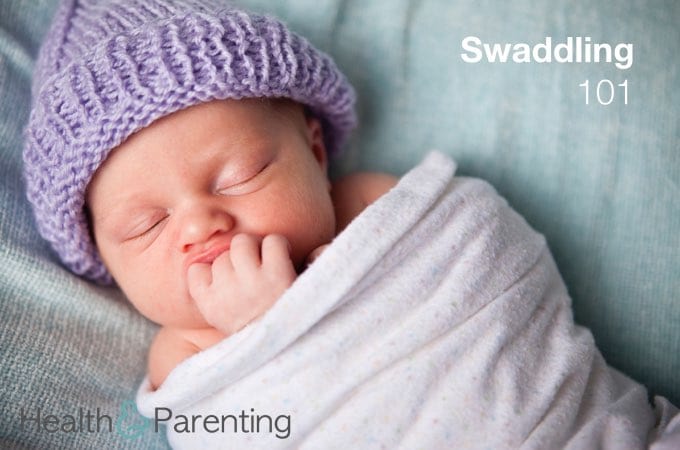The first few months after birth can be considered a 4th trimester for you and your baby. As he adjusts to the outside world, your baby still expects many of the same comforts of the womb he had in the 3rd trimester. Frequent feeding is just one of those. Being held all the time is another.
Parents sometimes find their newborn babies stay calmer and fuss less when swaddled much of the time, since swaddling mimics being held tight in the womb. While being held in the arms of a caregiver is preferred, swaddling can allow you some time with your hands free!
Here are some tips and tricks to make swaddling work for you:
- Use a light blanket for swaddling – dress baby lightly underneath the swaddling blanket, keep the room temperature comfortable, and watch for signs of overheating, such as warm/hot skin, flushed cheeks, heat rashes or rapid breathing.
- Consider baby’s hands – Some babies like to have their hands near their faces when swaddled, rather than having them trapped in the tight blanket. Try both ways to see what works for you.
- Keep hip health in mind – hip dysplasia has been linked to too-tight swaddling. Keep baby’s legs in a “frog” position – with the legs bent and out at the hips – or allow them to be loose so baby can find a naturally comfortable position.
- Keep the blanket from touching baby’s cheek or mouth – this could prompt the rooting reflex which may be counterproductive to calming.
- Always place your baby on his back to sleep, even when he is swaddled.
- Avoid a too-tight blanket – you should be able to get a couple of fingers between the blanket and the baby.
- Avoid a too-loose blanket – the blanket itself can pose a suffocation risk if baby can wriggle free.
- Watch for hunger cues – swaddled babies may sleep longer and deeper, but this may be detrimental to your milk supply and baby’s growth. A swaddled baby may need to be awakened to eat.
- Swaddle selectively – use it as a calming tool, but let baby move his arms and legs when he’s awake and alert.
- Don’t swaddle forever – Once your baby can roll over on his own (typically between 4 and 6 months), it’s best to stop swaddling. If he’s swaddled he may have difficulties breathing, when he rolls over onto his tummy.
An option to swaddling your baby is to wear your baby in a carrier, such as a sling or wrap. This allows baby to be in a womb-like cocoon while at the same time feeling your movements and your warmth, and hearing your heartbeat and your voice – all of which is calming to a newborn.
Whether you choose swaddling or babywearing, remember that one comforting method won’t work all the time. As you get to know your baby, you’ll learn what works best for him and for you.
Have you been swaddling your baby? What tips do you have for new moms?
Written by Michelle, Lamaze instructor, lactation consultant, and mother to 4 busy kids
This information is not intended to replace the advice of a trained medical doctor. Health & Parenting Ltd disclaims any liability for the decisions you make based on this information, which is provided to you on a general information basis only and not as a substitute for personalized medical advice. All contents copyright © Health & Parenting Ltd 2016. All rights reserved.










